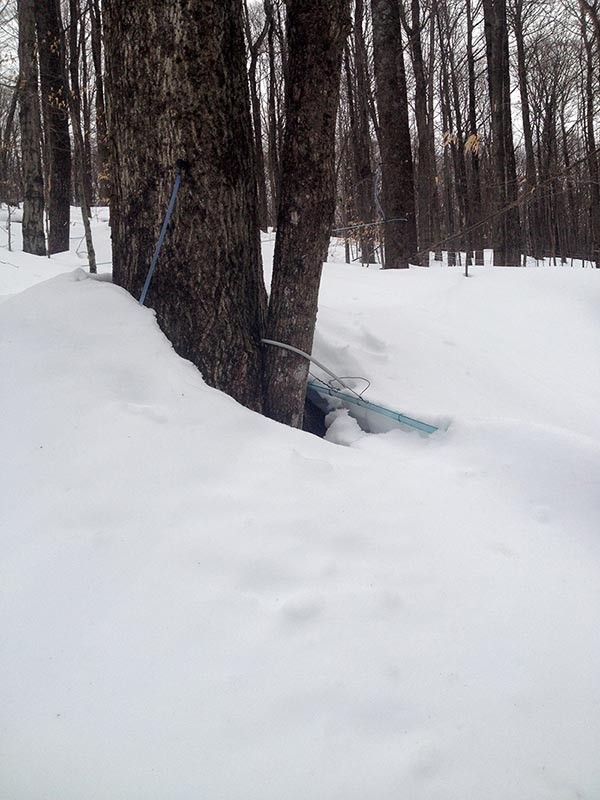So the cumulative effect of the four March Nor’easters hit this area hard. Ten miles away from our Hall bush and 800 feet up in elevation, one weather-watcher documented 81 inches of snow that fell in 8 days.
Our sugarbush on the Taconic range escaped with knee-deep snow, but the Hall bush got pounded. I don’t know how deep it was, but floundering deep. As the snow buried mainlines it snapped the wires that held them suspended to trees. In the north- and the east-facing woods I was still, as of yesterday, pulling buried mainline up and out of the snow.
As this mainline sagged, sap collected then froze, creating ice blockages. When the weather started to break, the tubing system completely filled with sap and then froze, pushing spiles out of trees, snapping plastic fittings, pulling mainlines apart.
All told, that bush generated a quarter of the sap in March as it did in February.
We’re still going; I can’t really tell how much is left. But as I’m looking at numbers this morning it’s the low sugar content that really stands out. We’ve collected and processed about 30,000 gallons of sap so far, and when you look at the amount of syrup we’ve made from it, the sugar content across the board averages out to around 1.4 percent. That’s a 61:1 sap to syrup ratio. Most years we’re closer to 40:1.
Why? I suspect it’s because the maples had a hard go of it last year. Remember the summer of 2016 was so hot and dry. And then the winter of 2016-2017 was warm with lower-than-normal snowfall amounts. We had a good sugaring season last spring, which took some of the tree’s reserves, followed immediately by a prolific seed year – botanists called it a “stress crop” – which took more from the reserves. And then late summer last year was dry. Remember how the leaves dropped in September without a frost. How October was the warmest in recorded history.
Through this lens it doesn’t seem surprising that the trees have less energy in their bank accounts than they normally do. One thing that makes me feel better is that the gobs of snow we got in March fell on unfrozen soil; the 10-day forecast indicates it may have the opportunity to slowly percolate into the earth, which I think will be great for the trees.



Discussion *